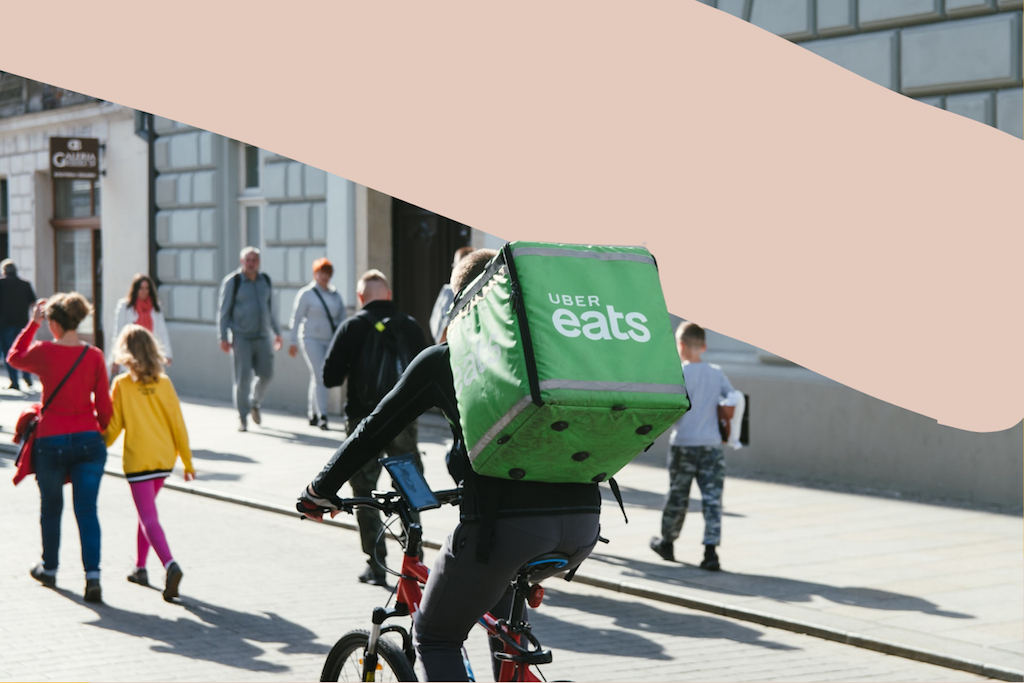Here’s a home truth: running a food business in today’s market requires agility, creativity, and a willingness to explore new revenue streams. Whether you’re operating a restaurant, café, or catering company, diversifying your offering can help you reach new customers, increase profitability, and build resilience against market uncertainties.
Here are 9 practical ways to diversify your food business’ offering.
Embrace Third-Party Delivery Platforms
The British appetite for takeaways continues to surge, with the UK food delivery market projected to reach £14.3 billion in 2025, representing 3.1% growth year-on-year. Around 60% of the UK population now orders delivery food at least once annually, with platforms like Uber Eats, Just Eat, and Deliveroo dominating the market.
Whilst these platforms charge commission (typically 25-35%), they provide immediate access to thousands of potential customers and handle the logistics of delivery. For food businesses looking to expand their reach without significant upfront investment, third-party delivery services offer a pragmatic solution. They also provide valuable marketing exposure through their apps’ search functions and promotional features.
The key is ensuring your menu is optimised for delivery – dishes that travel well, maintain their quality, and can be packaged effectively will perform best. Consider creating a separate delivery menu that focuses on your most transportable offerings.
Build Your Own Delivery Fleet
For businesses with strong local demand, establishing an in-house delivery operation presents an alternative to third-party platforms. Branded delivery vehicles serve as moving advertisements, increasing your visibility throughout your neighbourhood whilst you maintain control over the customer experience.
Running your own fleet allows you to train drivers in your brand’s standards, ensuring they represent your business professionally. You’ll also avoid the hefty commission fees charged by delivery platforms, potentially improving your profit margins on each order.
However, this approach requires careful consideration of the costs involved. You’ll need to factor in wages, fuel, insurance premiums, vehicle maintenance, and potential legal issues such as parking fines or traffic incidents. There’s also the risk that poorly behaved drivers could damage your brand reputation. Weigh these considerations carefully before committing to your own delivery operation.
Food for thought, indeed.

Develop A Retail Product Range
Expanding into retail products like condiments, sauces, pickles, and chutneys creates a new revenue stream whilst keeping your brand in customers’ homes. The UK condiments and seasoning manufacturing market is valued at £2.6 billion in 2024, with growing consumer demand for innovative flavours and premium products driving continued growth in the sector.
Jarred products offer several advantages. They have a longer shelf life than fresh food, reducing waste and allowing for more flexible production schedules. Every time customers reach for your chutney or hot sauce, they’re reminded of your business. These items also make excellent gifts, extending your reach through word-of-mouth recommendations.
Start by developing products that complement your existing menu – perhaps a signature sauce or a pickle that features in your most popular dishes. Once you’ve perfected your recipes, approach local delis, farm shops, and independent grocers about stocking your products. Make sure your packaging is attractive and clearly branded to maximise impact on shop shelves.

Launch Meal Kits For Home Cooking
Restaurant meal kits exploded in popularity during lockdowns and have remained a valued option for customers who want restaurant-quality food with the satisfaction of cooking it themselves. These kits contain pre-portioned ingredients and clear instructions, allowing home cooks to recreate your signature dishes in their own kitchens.
Offering nationwide delivery of meal kits allows you to expand beyond your local catchment area, introducing your brand to customers across the country. This can be particularly valuable for building a following before potentially opening new locations, or for reaching customers in areas where a physical presence wouldn’t be commercially viable.
The investment required includes appropriate food preparation equipment and a reliable delivery infrastructure that can handle temperature-controlled shipping. Using recyclable and sustainable packaging is essential, as environmentally conscious consumers increasingly factor sustainability into their purchasing decisions.
Invest In A Mobile Kitchen Or Food Truck
Mobile kitchens and food trucks transform your business into a portable brand activation opportunity. According to the Response Logistics official website, mobile kitchens offer remarkable flexibility for food businesses looking to reach customers at festivals, markets, corporate events, and pop-up locations.
A well-executed food truck operation allows you to test new markets before committing to permanent locations, cater private events, and build brand awareness in areas where your potential customers gather. The key is keeping your mobile menu focused – a smaller, streamlined offering that can be prepared efficiently in a compact space whilst maintaining your quality standards.
Food trucks also benefit from the “cool factor” associated with street food culture. They photograph well for social media and create a sense of occasion that encourages customers to share their experience online. Just ensure your vehicle’s branding is bold, clear, and consistent with your main business identity.

Host Supper Clubs & Private Dining Events
The UK dining landscape shows strong appetite for unique experiences, with over 61% of consumers saying a unique atmosphere or social experience draws them out to eat. Meanwhile, the number of restaurants charging over £150 per head has risen 46% in London in the past year, demonstrating diners’ willingness to pay premium prices for exceptional dining experiences.
Supper clubs and private dining events allow you to showcase your culinary skills in intimate settings whilst charging higher prices that reflect the exclusive nature of the experience. These events can take place in your restaurant on quiet nights, in hired venues, food markets, or even in customers’ homes, depending on your business model.
Beyond the immediate revenue, these events provide invaluable opportunities to connect directly with customers, gather feedback, and build a community around your brand. They’re also highly shareable on social media, generating organic marketing content that money can’t buy.
Offer Cooking Classes & Workshops
Teaching customers how to recreate your dishes – or introducing them to new cooking techniques – diversifies your income whilst positioning you as an authority in your culinary niche. Cooking classes can be conducted in your commercial kitchen during off-peak hours, maximising the use of your space and equipment.
Classes work particularly well for businesses with a clear culinary identity or specialism. If you’re known for your pasta, run fresh pasta-making workshops. If your bakery’s sourdough draws queues, teach bread-making classes. These sessions create deeper engagement with your brand than a simple transaction ever could.
You can also explore online cooking classes, which remove geographical limitations and allow you to reach a much wider audience. The investment in basic video equipment and editing software can open up an entirely new revenue stream with relatively low ongoing costs.

Partner With Local Businesses For Catering Contracts
Securing regular catering contracts with local offices, schools, hospitals, or events venues provides predictable revenue that can smooth out the peaks and troughs of restaurant trade. These contracts often involve preparing food in bulk, which can be more efficient than individual restaurant covers.
Start by identifying businesses in your area that might benefit from your food offering. Many offices are moving away from generic sandwich platters towards more interesting catering options. Schools and nurseries often need healthy, appealing meals for children. Event spaces require reliable catering partners who can deliver consistent quality.
Approach these potential partners with a clear proposal that outlines what you can offer, your pricing structure, and your reliability credentials. Even landing one or two regular contracts can significantly improve your cash flow stability.
Create Branded Merchandise & Experiences
Beyond food itself, consider how you can extend your brand into related products and experiences. Branded merchandise like aprons, tea towels, recipe books, or even kitchenware featuring your logo can generate additional income whilst increasing brand visibility.
Some food businesses have successfully launched subscription boxes, offering monthly deliveries of curated products, ingredients, or baked goods. Others have developed branded experiences like food tours or tasting events that allow customers to engage with their brand in new ways.
The key is ensuring any diversification feels authentic to your core business. A bakery launching a cookbook makes intuitive sense; the same bakery selling unrelated merchandise would feel jarring. Stay true to your brand values and only pursue opportunities that genuinely enhance what you’re already known for.
The Bottom Line
Diversifying your food business’ offering isn’t just about chasing every possible revenue stream – it’s about strategically expanding in ways that complement your existing strengths, reach new customers, and build resilience into your business model. The most successful diversification happens when you identify what your business does exceptionally well and find new ways to deliver that value to different audiences or in different formats.
Start small, test your ideas, and listen carefully to customer feedback. Not every diversification strategy will work for every business, but by thoughtfully exploring these options, you’ll discover new opportunities for growth whilst strengthening your position in an increasingly competitive market.





